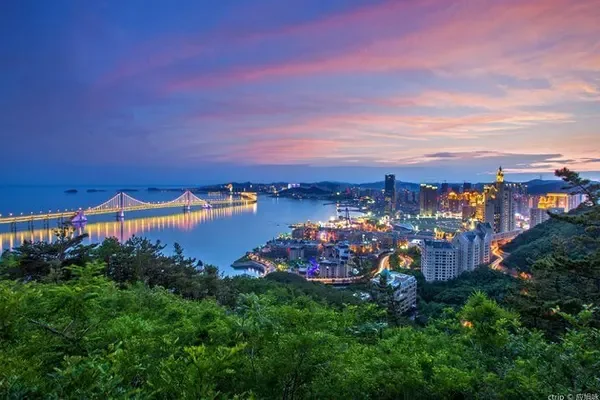Tang Wangcheng has been hovering in my mind. There is no detailed introduction in history. I only know that Tang Xuanzang traveled here to learn Buddhist scriptures from the west. It must have been the heyday of Buddhism in Xinjiang. There are only three of the nine beacon towers. Breath, beacon means beacon fire, the two signals of the ancient frontier defense alarm, smoke during the day is called beacon, and fire at night is called flint. A group of five people immediately came to Tang Wangcheng to find the atmosphere of that era and taste the shouts and neighs of the ancient battlefield.
Most of today's city walls and beacon towers have collapsed, and many of them are left with only soil bags, which shows that there has been no awareness of protection. The city walls built with red willows and mud highlight the wisdom of people in that era. The city and beacon towers still stand on the cliffs. The guarding of the border has always been the sacred duty of the border guards. Every inch of land is precious, and the country is strong and the mountains and rivers exist. Only when the country is strong can the people live and work in peace and contentment. How did the local people live in the park in 206?
After admiring Tang Wangcheng, we came to Xiahe Camp of Yarkand River. The Populus euphratica forest is deep and dense, and the birds are babbling and singing, really entering the primitive deep forest. The reeds on the riverside are dotted with the beauty of the Yarkand River. Friends, Please have a cup of tea and savor slowly with me.
Introduction to Tang Wangcheng (https://baike.so.com/doc/6558464-6772217.html)
It is called "Tuokuzisalai" in Uighur, which means nine post stations or nine beacon towers. That is, the ruins of Weitouzhou City in the Tang Dynasty. The ancient city was built in 206 BC and has a history of about 2,200 years. The ancient city is located on the north east side of the mountain pass at the southern end of Dairewaztag Mountain (Gate Mountain) of the 51st Regiment of Tumshuk City, covering an area of several square kilometers. The city wall is built with mud and stone.
Tang Wangcheng is very famous in history. Tang Xuanzang passed by this city when he went to the West to learn Buddhist scriptures. It is recorded that Tang Wangcheng promoted Theravada Buddhism, there were many monks, there was a lot of excitement, Buddhist activities were endless, and it was unprecedentedly brilliant. According to historical records, in the second century BC, Tang Wangcheng was the Weitou Kingdom among the thirty-six countries in the Western Regions. Later, it was the dividing line between the ancient Qiuci Kingdom and the ancient Shule Kingdom. It was a military fortress surrounded by mountains and rivers. In the Tang Dynasty, the settlement and reclamation flourished unprecedentedly, and the sons and daughters of Buddhism thrived here.
The destruction of Tang Wangcheng is still an unsolved mystery. Around the tenth century A.D., the records about Tang Wangcheng suddenly disappeared from the history books. It is said that it is due to the diversion of the river and the withering of the forest day by day.
Tang Wangcheng
Visiting here, Tang Xuanzang passed by here when he went to the West to learn Buddhist scriptures


ancient call

The village under the beacon tower

This place is also called Fossil Valley. If you are lucky, you can pick up fossils.


Although it has been a long time, it still stands on the cliff




Red willow has good toughness, and the soil will not collapse on it



The ruins of the city, the witness of history, the heyday of Buddhism in Tang Wangcheng Park in 206. The city is so eroded that it is almost invisible, will it still be there after a few years?


From left to right: Fang Jueqian, Flowers and Moon, Round Fruit Tree, Yaya

Beacon towers built with clods, mud, red willows, and logs


Indulge in this, think back to the dream of the year


Opposite is also Tang Wangcheng




Let’s take a close-up on the edge of the city wall to taste the atmosphere of that era




The fragrance of the earth fills my heart, and my mind is full of thoughts, what should we do

The beauties all left the most beautiful moments




I also show off


Xinjiang historical relics, not to be forgotten


Beacon Tower at Desert Park


The beacon tower on the top of the mountain has been divided into mounds





Features of Southern Xinjiang
















Leave the Desert Park and drive to Xiahe Camp on the Yarkand River
The Populus euphratica in the Yarkand River has deep and dense forests, and the birds are babbling and singing. We have entered the style of the primitive deep forest, and the reeds on the riverside are dotted with the beauty of the Yarkand River.







There are many poems praising the Yarkant River, and I use an excerpt from a poem, which I think is very appropriate
(excerpt below) http://blog.sina.com.cn/s/blog_493bfa620102vsv3.html
in the morning or evening
I'm wading through the water at this time of my youth
I don't know that bending is a kind of beauty
Hu Yang Lin
The magnificent veil of the shepherdess, the dancing feet
don't need to be vast, don't need to be noisy
Oasis, Dombra, Vineyards, Cattle and Sheep, Singing
. . . . . .
